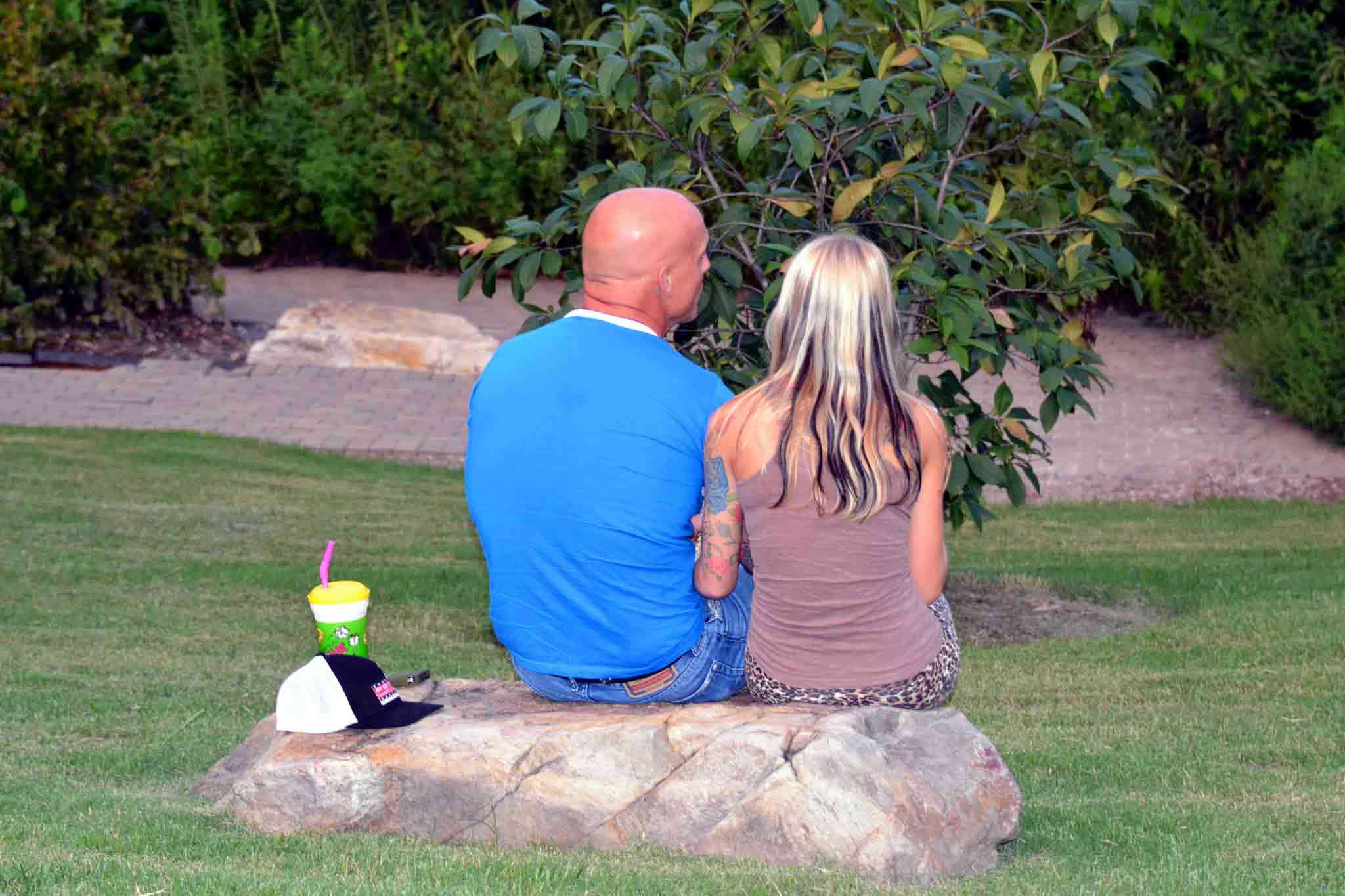Endings and Leavings | Part 6 of an 8-part series on the deeper Self that awakens in laboring through grief, living through loss, and embracing endings as the seedbed of new beginnings.
“Fear of breakdown is the fear of a breakdown that has already [happened].” (Donald Winnicott)
Our fear of endings can be traced to our very beginnings.
Birth itself is already a traumatic ending – leaving the warmth and severed security of the womb.

The skilled midwife who so artfully handles this break, who weaves together endings and beginnings, has been mostly replaced by a hyper-modernized, medical model of birth. Hospitals manage a fear-based “delivery” business that interrupts the natural mother-infant bonding experience, and teaches the mother to distrust her own mind and body.
So, from the get-go, we are not allowed to “end well.” And our beginnings are harshly lit and highly sterilized.
The modern world we are thrust into demands that we “dissociate,” that we evade our present emotional experience instead of using it to discover ourselves and connect with others.
Bonding and Breakdowns
Donald Winnicott, the late British pediatrician and influential psychoanalyst, studied another early “ending” – postpartum ruptures in the bonding process between mother and baby. For example, a baby’s distress intensifies when the mother mistakes a wetness cry for a hunger cry and agitates the baby by attempting to nurse.
These ruptures are normal and inevitable, even healthy – when there is a baseline of consistent, secure emotional attachment.
When ruptures are repaired by a “good-enough” mother who calmly refocuses and re-attunes to the child’s distress, Winnicott said, these momentary breakdowns help to instill resilience, trust and a degree of anxiety tolerance.
Losing and Finding
What is “good enough”? Child development researchers have discovered that even the most attentive and attuned mother is emotionally in sync with her baby only 30 percent of the time. What matters is not that ruptures happen, but that parents are emotionally grounded, consistent and available for repair work.
In other words, mother (and father) and baby must learn to dance together. A daily rhythm emerges of suffering well the mini-endings and misunderstandings, and delighting in ‘finding’ one another again.
 It’s a real-life game of peek-a-boo. The child can bear this hide-and-seek, because he anticipates that his mother’s face will return. And, that this face will accurately “mirror,” or reflect back to him, his own emotional experience.
It’s a real-life game of peek-a-boo. The child can bear this hide-and-seek, because he anticipates that his mother’s face will return. And, that this face will accurately “mirror,” or reflect back to him, his own emotional experience.
In being nourished by his parents’ emotional presence, the child learns how to soothe himself.
Premature Detachment as Survival
However, sometimes an infant is consistently overwhelmed by unmet and misread needs, and by parents who struggle to contain their own emotional needs and anxiety.
The overstimulated infant will defensively short-circuit this primitive agony – by detaching from himself from others in a resigned or enraged despair.
(Similarly, with some “cry it out” or rigid sleep-training methods, what’s promoted as the infant’s self-calming is really a forced, premature emotional detachment. This learned survival-mode may soothe the parents, but the infant risks replicating this numbing dissociation in waking life.)
The child who needs to consistently dissociate to survive isn’t experiencing a common rupture, but the threat of breakdown. Faced with this threat, the child learns to defensively eject himself from the emotional tumult he senses no one can bear with him.
Bracing for Breakdown
The breakdown or loss that the infant dissociates from, and so doesn’t adequately experience, he cannot then integrate well into his developing sense of Self, Winnicott observed.
Because he cannot quite locate in his past the “fact” of the breakdown that already happened, the infant becomes preoccupied with fearfully anticipating a future breakdown. The child’s psyche becomes haunted by, and fixated on protecting itself from, a past that was never quite experienced.
Extending Winnicott’s work, psychoanalyst Thomas Ogden describes how as adults we are driven to search for the source of our fear (even unconsciously), and for the “missing parts” that will make us whole.
In essence, we suffer as adults to the extent that we confuse past, present and future. We invest so much energy in unconsciously walling off the past that we cannot see how a younger part of the Self is reactively preoccupied with “reliving” it – in the vague hope of finding meaning and connection.
In the end, Ogden says, the cruel irony is that we’re left bearing the burden of “unlived life.”
Complicated Grief
Technically, the term “complicated grief” (“traumatic grief”) refers to chronically mourning the death of a loved one, especially when abnormal circumstances make the loss hard to accept. (Violent death, suicide, lengthy or abrupt illness, a co-dependent relationship or one with unresolved issues, etc.)
The bereaved suffers depression and PTSD-like symptoms. Their worldview is shattered. They are prone to compulsive rumination about the loved one and the negative consequences of loss, and/or avoiding reminders of it. They are tossed by waves of emotion, and preoccupied with denial, bitterness, and yearning for the loved one’s return as an end to all their suffering.
 However, these features of “complicated grief” ae not limited to bereavement. With any kind of loss, chronic mourning can become a refusal to grieve – which is at one level a narcissistic refusal to love. It’s a refusal to genuinely cherish memory, to bear endings as harbingers of beginnings, and to honor another’s life by continuing to live. True love is willing to bear heartache, and to grow through it.
However, these features of “complicated grief” ae not limited to bereavement. With any kind of loss, chronic mourning can become a refusal to grieve – which is at one level a narcissistic refusal to love. It’s a refusal to genuinely cherish memory, to bear endings as harbingers of beginnings, and to honor another’s life by continuing to live. True love is willing to bear heartache, and to grow through it.
The chronic mourner’s fragility and denial may indicate other early unresolved trauma (chronic or severe) in life, which has limited the ability to develop a trusting, resilient sense of Self.
Christian Counseling: Breaking into Wholeness
Grieving is complicated by the fear of breakdown, as we deny the ending it seems we cannot bear.
In Part 7, we’ll explore how infants form an emotional or psychic “second skin” to fend off fears of breakdown, and how as adults we still rely on this ingrained defense mechanism.
In Christian counseling, we find that there is no imminent breakdown. As Winnicott stated, the breakdown already happened. Until we accept and deeply grieve this reality, we will live under its tyranny. Acceptance doesn’t mean we won’t experience future loss or heartache – only that we have what’s needed to face it. Because we trust that God sees and is already working it for good.
From a Christian and human perspective, this brokenness is a vitally redemptive part of our growth and wholeness, not a source of fear and shame. We are invited to remember this during Communion: as we take in the broken bread (body) and poured-out wine (blood) of the Eucharist, we somberly yet joyfully animate the ancient Christian narrative of life breaking into wholeness.
We grow down into our deeper Christ-Self by allowing our loss to mark us, so that we begin to make emotional contact with the painful “felt experience” we once fled – and continue to flee. In this sense, we invite a long-abandoned part of ourselves to come home.
Winnicott, D. W. (1974). Fear of breakdown. International Review of Psychoanalysis, 1, 103-107.
Ogden, T. (2014). Fear of breakdown and the unlived life. International Journal of Psychoanalysis, 95 (2), 205-223.Photos
“Tough wait for dinner,” courtesy of Michal Wiatr, Flickr CreativeCommons (CC BY-SA 2.0); “Too Young to Feel this Old,” courtesy of Dee Ashley, Flickr CreativeCommons (CC BY 2.0); “Emotional,” courtesy of Tanay Mondal, Flickr Public Domain License






